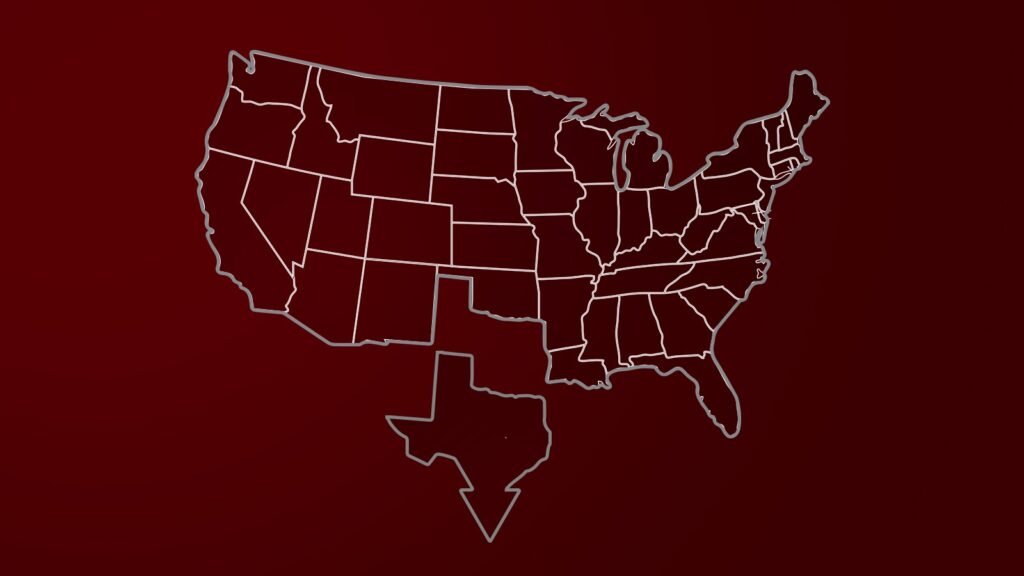The TEXIT, or the Texas nationalist movement, is a name gradually surging on the American and global stage, gaining momentum in recent months as the US suffers more divisions and polarization than ever. It’s a long story—as old as the US civil war. But it appears things are heating up—and perhaps the climax is coming soon, with a key portion of the US planning—and assiduously working—to break from the world’s most powerful nation.
Throughout the American history, the Lone Star State, Texas, weaves a complex narrative that includes its struggle for independence, the echoes of secession, and contemporary debates on Texit. The roots of Texas’s secession movements can be traced back to its tumultuous past, where the Republic of Texas stood proudly for nine years before joining the United States.
Texas seceded from Mexico in 1836 after the fervent Texas Revolution, driven by American settlers against the Mexican government led by Santa Anna. However, Mexico refused to recognize Texas’s sovereignty despite its victory in the revolution, and internal struggles persisted over the vision for Texas’s future. The first President of Texas, Sam Houston, advocated for statehood within the United States, citing economic and security concerns. In contrast, President Mirabeau B. Lamar envisioned an independent republic stretching from the Louisiana border to the Pacific Ocean, earning him the title of the father of Texas nationalism.
The entry of Texas into the Union in 1845 did not fully assuage the tensions. Dissatisfaction lingered, fueled by perceived broken promises from Washington and opposition to President Lincoln’s stance on states’ rights. When secession debates gained momentum in 1861, Sam Houston remained a staunch supporter of the Union, emphasizing economic and military benefits.
The secessionists, drawing on historical precedents such as the American Revolution and the Texas Revolution, passed an ordinance of secession on February 1, 1861. This decision, ratified in a popular referendum on February 23, made Texas the seventh and final state in the Lower South to secede. Slavery played a central role in the secession narrative, as reflected in the ordinance.
Post-Civil War, Texas maintained a Confederate identity, refusing to fully embrace a Texan identity. The “Lost Cause” mythology persisted, and a sense of defiance against the United States lingered. Texas, unique in its history, emphasized its cowboy heritage and connection with the U.S. Southwest, shaping its identity distinctively from other southern states.
The notion of states’ right to secede gradually faded, replaced by a mythology emphasizing the indivisibility of the nation. However, Texas retained a distinct identity, fostered by a historical legacy of independence and self-determination, often viewed in contrast to perceived interference by the federal government.
In the 1990s, Texas embarked on a campaign promoting its distinctiveness with the slogan “Texas. It’s Like a Whole Other Country,” echoing sentiments of independence and pride. The historical narrative, taught to seventh graders in the state, fosters a sense of Texas as a unique entity within the United States.
The 21st century witnessed a revival of secession discussions, with organizations like the Republic of Texas and the Texas Nationalist Movement advocating for Texit. Recent political events, such as the Supreme Court’s decision on the 2020 presidential election, rekindled talks of secession, even though legal precedents firmly reject the possibility.
In 2016, Britain departed from the European Union following a controversial referendum that divided the British. The development was monumental—especially for TEXIT. Daniel Miller, the head of the Texas Nationalist Movement, looked at the Brexit with awe and inspiration.
An article published in the Guardian in the same year sums it up: How closely is Daniel Miller tracking the news ahead of the referendum about whether Britain should leave the European Union? “Hourly!” he grins. The Sun’s recent editorial calling for the UK’s departure got him quite excited. Miller, though, is not from London or Liverpool. He hails from Longview, Texas, and we are talking in a cafe in the bleakly industrial Gulf coast town of Port Arthur, some 5,000 miles from Westminster. Culturally, too, we are a long way from Europe. Heck, we are even a long way from Dallas. But the referendum matters deeply to Miller and like-minded Texans. As the president of the Texas Nationalist Movement, which wants Texas to secede from the United States, he is hoping for a Leave vote that he believes will ripple all the way from Austria to Austin.”
Thus, there are roots for the current TEXIT dilemma. There’s Brexit and there’s Nigel Farage—but now in the US rather than the UK.
In June 2022, the Texas State Republican Convention adopted a platform urging the Legislature to put a referendum before the people of Texas in November 2023 “to determine whether or not the State of Texas should reassert its status as an independent nation.”
And in 2023, former state Rep. Bryan Slaton filed a resolution seeking an election to allow Texas voters to decide whether to leave the United States. Despite perennial talk of another secession, the law is clear that Texas may not leave the union.
“The legality of seceding is problematic,” Eric McDaniel, associate professor of government at the University of Texas at Austin, told The Texas Tribune in 2016. “The Civil War played a very big role in establishing the power of the federal government and cementing that the federal government has the final say in these issues.”
As the United States was torn apart by divisions over whether slavery could expand into the nation’s western territories, Texas in 1861 voted to secede from the Union. In the ensuing Civil War, up to 750,000 people — more than 2 percent of all Americans — died. Following the defeat of the Confederacy in 1865, Texas was formally readmitted to the Union in 1870, during the Reconstruction Era. Many historians believe that when the Confederacy surrendered at Appomattox in 1865, the idea of secession was forever defeated, McDaniel said. The Union’s victory set a precedent that states could not legally secede.
Even before Texas formally rejoined the nation, the U.S. Supreme Court declared that secession had never been legal, and that, even during the rebellion, Texas continued to be a state.
In late 2023, a legislator from Texas introduced a bill that proposes a referendum for voters to determine if the state should investigate the option of separating from the United States. The bill, titled the TEXIT Referendum Act, suggests that if approved, a referendum on Texas “reaffirming its position as an autonomous nation” would be slated for the upcoming general election on November 7, 2023. Additionally, the legislation mandates the presentation of potential plans to the state legislature.
Thus, the Texans’ attempt to break from the US are very old—and very recent. But the issue is wholly complicated and problematic. Some analysts go too far, heralding that the division and disintegration of the US is a stone’s throw. Others totally downplay the current political movement in Texas, citing legal inhibitions that prevent the state from leaving the Union. But politics knows no gospel truths. Everything could change overnight—and we could see another Brexit in the US, that is, TEXIT.


